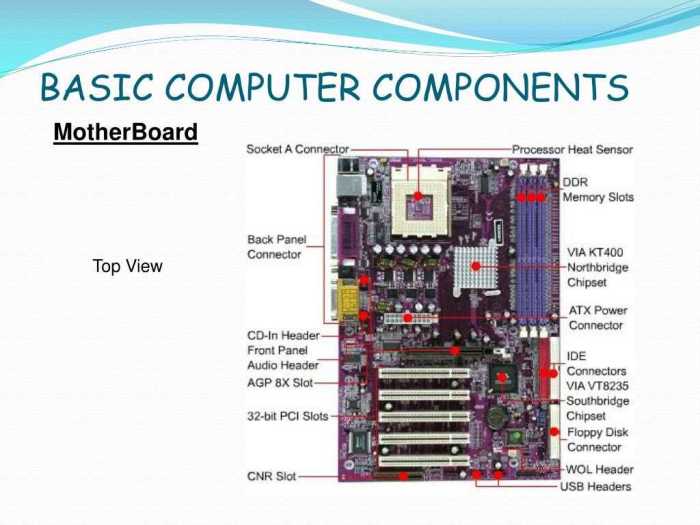Lab 1-3: Testing Mode: Identify Internal Components of a Computer embarks on an enlightening journey into the intricate realm of computer hardware, meticulously dissecting the essential components that orchestrate the seamless functioning of a computer system. This comprehensive guide unveils the significance of each internal component, from the pivotal CPU to the indispensable storage devices, providing a foundational understanding of the harmonious interplay that drives computer performance.
Delving deeper into the labyrinthine connections that unite these components, this discourse elucidates the intricate communication channels that facilitate data exchange and seamless interactions within the computer’s architecture. The significance of buses and interfaces in orchestrating these interactions is thoroughly examined, shedding light on the intricate network that enables the computer to execute complex tasks with remarkable efficiency.
Identifying Internal Computer Components
Internal computer components play a crucial role in the functionality of a computer system. They work together to perform essential tasks, enabling the computer to process, store, and retrieve data, and execute instructions.
The primary internal components of a computer include the following:
- Central Processing Unit (CPU)
- Random Access Memory (RAM)
- Motherboard
- Power Supply Unit (PSU)
- Storage Devices (e.g., Hard Disk Drive, Solid State Drive)
- Graphics Card
CPU
The CPU is the brain of the computer. It executes instructions, performs calculations, and controls the flow of data within the system.
RAM
RAM is a volatile memory that stores data and instructions that are currently being processed by the CPU. It provides fast access to data, enabling the computer to perform tasks efficiently.
Motherboard
The motherboard is the central circuit board that connects all the components within the computer. It provides pathways for data and power transmission, and facilitates communication between components.
Power Supply Unit (PSU), Lab 1-3: testing mode: identify internal components of a computer
The PSU converts alternating current (AC) power from the wall outlet into direct current (DC) power, which is required by the computer components.
Storage Devices
Storage devices store data permanently. Hard disk drives (HDDs) and solid state drives (SSDs) are common storage devices used in computers.
Graphics Card
The graphics card processes and displays images and videos on the computer’s monitor. It is essential for tasks such as gaming, video editing, and graphic design.
Understanding Component Interactions

The internal components of a computer communicate and exchange data through various buses and interfaces.
Buses are pathways that allow data to be transferred between components. Common buses include the Peripheral Component Interconnect (PCI) bus and the Accelerated Graphics Port (AGP) bus.
Interfaces are connectors that enable communication between components. Examples include the Universal Serial Bus (USB) interface and the Serial Advanced Technology Attachment (SATA) interface.
The interaction between components is crucial for the smooth functioning of the computer system. Data is transferred from the storage devices to the RAM, where it is processed by the CPU. The processed data is then displayed on the monitor through the graphics card.
Visualizing Component Locations: Lab 1-3: Testing Mode: Identify Internal Components Of A Computer

The internal components of a computer are typically arranged within the computer case in a specific layout.
The motherboard is mounted on the bottom of the case, with the CPU and RAM installed on the motherboard. The storage devices are usually located in drive bays within the case.
The power supply unit is typically located at the top or bottom of the case. The graphics card is installed in a PCI or AGP slot on the motherboard.
The placement and organization of components within the case are influenced by factors such as cooling requirements, airflow, and accessibility for maintenance and upgrades.
Troubleshooting and Diagnostics

Troubleshooting and diagnosing issues related to internal components is essential for maintaining a functional computer system.
Common troubleshooting methods include:
- Checking for loose connections or damaged cables
- Testing components using diagnostic tools
- Replacing suspected faulty components
Diagnostic tools can help identify specific issues with components. For example, memory testing tools can detect errors in RAM, while stress testing tools can identify potential overheating or stability issues with the CPU.
Replacing faulty components requires technical skills and knowledge of the computer’s hardware. It is recommended to seek professional assistance if necessary.
FAQ Explained
What is the most crucial internal component of a computer?
The CPU (Central Processing Unit) is widely regarded as the most critical internal component, serving as the brain of the computer, responsible for executing instructions and coordinating the overall functioning of the system.
How can I identify faulty internal components?
Diagnostic tools and techniques, such as POST (Power-On Self-Test) and specialized diagnostic software, can assist in identifying malfunctioning components by analyzing system behavior and pinpointing potential hardware issues.